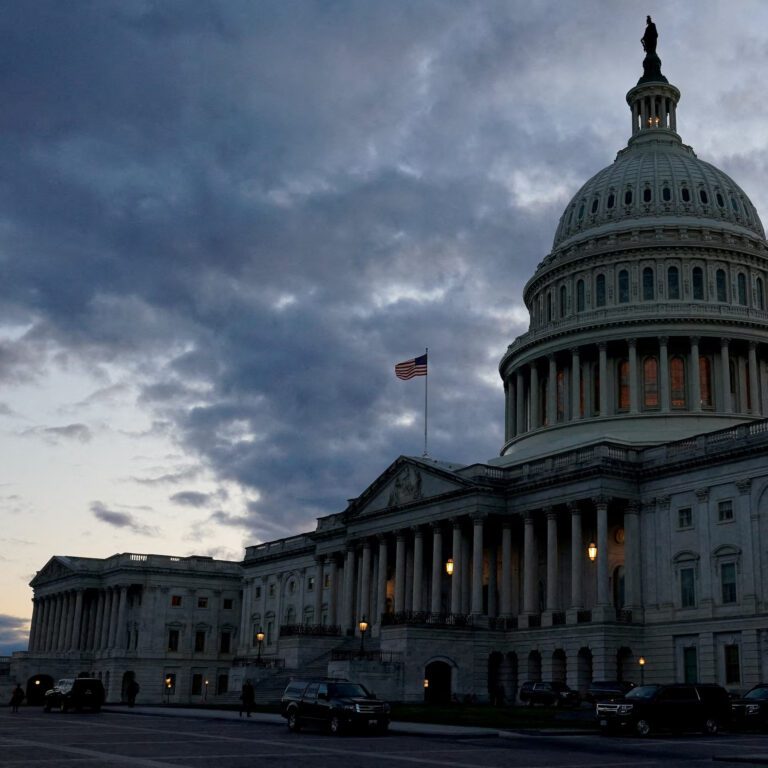🎧 Listen to This Article
The U.S. House of Representatives is set to advance a pivotal budget resolution on Wednesday to extend President Donald Trump’s 2017 tax cuts, reviving a core tenet of his economic agenda. However, deep fractures within the Republican majority threaten to delay the effort as internal disputes mount over how to fund the cuts without exploding the national debt.
The plan—designed to lock in $5 trillion in tax reductions—has sparked sharp debates over its potential to add $5.7 trillion to the federal deficit within a decade, according to nonpartisan analysts. At the heart of the GOP rift is whether the proposal is paired with sufficient spending cuts, with hardline fiscal conservatives demanding $2 trillion in reductions, far beyond the Senate’s budget passed last weekend.
Context & Political Weight
With both chambers preparing for a two-week recess starting Friday, the House push represents a critical window for Republicans to secure momentum behind Trump’s economic platform, especially as he eyes a return to the White House. Speaker Mike Johnson has framed the moment as a “historic, once-in-a-generation opportunity” to relieve families and realign the economy.
Yet Johnson faces a caucus divided between fiscal hawks wary of rising debt and moderates anxious about potential $880 billion in cuts to health and energy programs, including Medicaid—a politically sensitive target in an election year.
Meanwhile, Democrats have seized on the proposal’s debt and equity implications, with House Democratic Chair Pete Aguilar labeling it a “death blow to the American economy”, particularly when paired with Trump’s latest tariff plan, which has triggered Wall Street’s sharpest selloff in five years.
Economic and Compliance Implications
The renewed tax cut effort would:
- Extend key provisions from the Tax Cuts and Jobs Act of 2017, including reduced individual and corporate rates.
- Advance new proposals to eliminate federal income taxes on overtime pay and gratuities, aligning with Trump’s 2024 campaign promises.
- Reinforce border security funding via the same package—an unusual coupling with fiscal legislation.
If enacted, the plan could significantly reshape corporate tax liabilities, alter individual tax reporting, and reduce federal revenue intake well into the 2030s.
CBO Forecast: “While the plan may temporarily boost GDP by 0.3% through 2027, it begins to drag growth from 2028 and ultimately contracts the economy by 2034,” according to the Congressional Budget Office.
Stakeholder Reactions
- Committee for a Responsible Federal Budget (CRFB):
“This budget allows twice the borrowing of the House’s previous framework while offering just 0.2% of the required spending reforms.” - Moderate Republicans:
Privately express concerns over the political fallout of gutting social programs and potential backlash in swing districts. - Conservative Caucus Members:
Demanding $2 trillion in cuts to “realign fiscal discipline with Reagan-era principles,” especially amid surging debt now topping $36.6 trillion. - White House Meeting Recap:
Trump told lawmakers Tuesday night to “get in line” and dismissed compromise: “You don’t negotiate like I negotiate.”
Next Steps & What to Watch
If the House adopts the resolution, it opens the door to reconciliation legislation—the powerful budget tool that enables passage in the Senate with a simple majority. The real legislative grind will begin thereafter:
- Expect fierce Democratic resistance in the Senate.
- Watch for potential internal GOP realignment or amendments to soften social program cuts.
- Close monitoring from markets and institutional investors, especially given macroeconomic uncertainty from Trump’s tariff escalations.
For further details, clarification, contributions, or any concerns regarding this article, please contact us at editorial@tax.news. We value your feedback and are committed to providing accurate and timely information. Please note that our privacy policy will handle all inquiries



